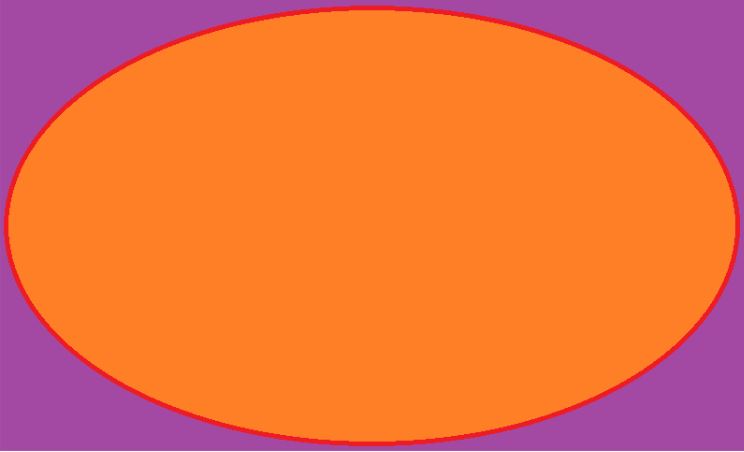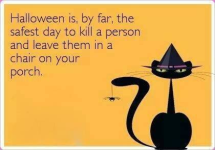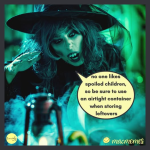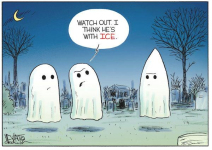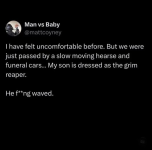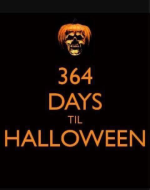You are using an out of date browser. It may not display this or other websites correctly.
You should upgrade or use an alternative browser.
You should upgrade or use an alternative browser.
It's Halloween .....
- Thread starter Shiftless2
- Start date
Shiftless2
Well-known member
Shiftless2
Well-known member
Shiftless2
Well-known member
OKKKI.C.E. #4
I get it.
50th Anniversary:

Mercury referred to "Bohemian Rhapsody" as a "mock opera" that resulted from the combination of three songs he had written. It was recorded by Queen and co-producer Roy Thomas Baker at five studios between August and September 1975. Due to recording logistics of the era, the band had to bounce the tracks across eight generations of 24-track tape, meaning that they required nearly 200 tracks for overdubs. The song parodies elements of opera with bombastic choruses, sarcastic recitative, and distorted Italian operatic phrases. Lyrical references include Scaramouche, the fandango, Galileo Galilei, Figaro, and Beelzebub, with cries of "Bismillah!"
Although critical reaction was initially mixed, retrospective reviews have acclaimed "Bohemian Rhapsody" one of the greatest songs of all time, and it is often regarded as the band's signature song. The promotional video is credited with furthering the development of the music video medium. It has appeared in numerous polls of the greatest songs in popular music, including a ranking at number 17 on Rolling Stone's 2021 list of the “500 Greatest Songs of All Time”. A Rolling Stone readers' poll also ranked Mercury's vocal performance in the song as the greatest in rock history.

 en.wikipedia.org
en.wikipedia.org
Bohemian Rhapsody
1975 single by Queen
Summary
"Bohemian Rhapsody" is a song by the British rock band Queen, released as the lead single from their fourth studio album, A Night at the Opera (1975). Written by Queen's lead singer Freddie Mercury, the song is a six-minute suite, notable for its lack of a refraining chorus and consisting of several sections: an intro, a ballad segment, an operatic passage, a hard rock part and a reflective coda. It is one of the only progressive rock songs of the 1970s to have proved accessible to a mainstream audience.Mercury referred to "Bohemian Rhapsody" as a "mock opera" that resulted from the combination of three songs he had written. It was recorded by Queen and co-producer Roy Thomas Baker at five studios between August and September 1975. Due to recording logistics of the era, the band had to bounce the tracks across eight generations of 24-track tape, meaning that they required nearly 200 tracks for overdubs. The song parodies elements of opera with bombastic choruses, sarcastic recitative, and distorted Italian operatic phrases. Lyrical references include Scaramouche, the fandango, Galileo Galilei, Figaro, and Beelzebub, with cries of "Bismillah!"
Although critical reaction was initially mixed, retrospective reviews have acclaimed "Bohemian Rhapsody" one of the greatest songs of all time, and it is often regarded as the band's signature song. The promotional video is credited with furthering the development of the music video medium. It has appeared in numerous polls of the greatest songs in popular music, including a ranking at number 17 on Rolling Stone's 2021 list of the “500 Greatest Songs of All Time”. A Rolling Stone readers' poll also ranked Mercury's vocal performance in the song as the greatest in rock history.

Bohemian Rhapsody - Wikipedia
Shiftless2
Well-known member
Shiftless2
Well-known member
"... I'm crazy 'bout a Mercury.
Cruise up and down this road." Steven Miller
https://open.spotify.com › track › 6dvuT4x8UzuRS88v6XhXS0
Halloween has its origins in the ancient Celtic festival of “Samhain” – the celebration of the end of harvest season. Back then, the Gaels believed that on October 31, the boundaries between the worlds of the living and the dead got a little blurry and the dead would come back to life and wreak havoc among the living. One way to scare the dead? Wear costumes and masks. https://www.ef.edu/blog/language/13-thrilling-facts-bet-didnt-know-halloween/
Shiftless2
Well-known member
Shiftless2
Well-known member
Shiftless2
Well-known member
Shiftless2
Well-known member
Shiftless2
Well-known member
Now that Halloween is gone have you ever wondered where those symbols came from?

 www.ranker.com
www.ranker.com

12 Scary Halloween Symbols And Their Origins
As Halloween approaches, there's no shortage of decorations for sale, usually covered with Halloween symbols that we all recognize, even if we don't know where they come from. Along with ridiculous costumes and enough candy to make you vomit, there are some things that you find every single...
Shiftless2
Well-known member
Shiftless2
Well-known member
BTW, if you hate Trick or Treaters there's plenty of time to stock up on small bags of these things
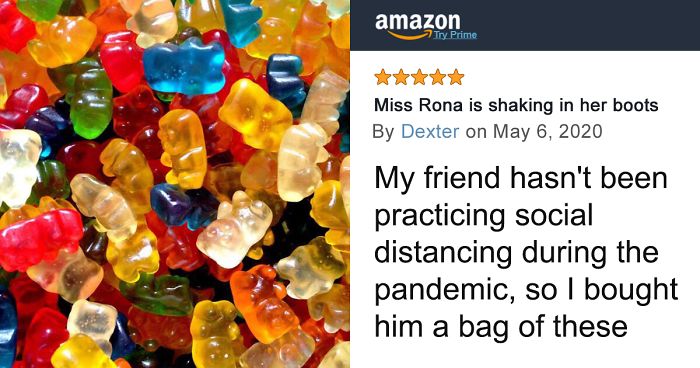
 www.boredpanda.com
www.boredpanda.com

20 Hilarious Sugar-Free Gummy Bears Reviews
Discover the hilarious Haribo sugar-free gummy bear reviews left on Amazon by some truly unsatisfied purchasers of this “sweet delicacy.”
